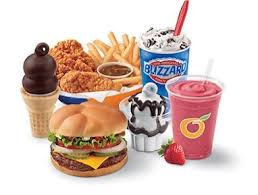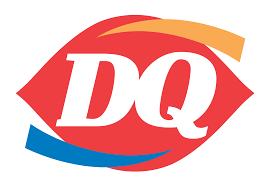If you’ve ever walked into a Dairy Queen craving a Blizzard or a burger but paused because of a food allergy, this article is for you. You want to know exactly what allergens are present in Dairy Queen’s menu items, how to navigate their allergen menu, and what steps you can take to stay safe. We’ll dig deep into their allergen policy, show real‑life examples of menu items with allergen codes, walk you through how to check at your local store, and give you practical tips to make informed decisions.
What does “allergen menu” mean at Dairy Queen
Dairy Queen publishes a nutrition and allergen information chart for its menu items. On their official guides you’ll find tables listing calories, fats, carbs, and allergen codes next to each item.

Important to note:
-
They clearly state a disclaimer that “Dairy Queen locations contain allergens that may come into contact with your food. Since allergens are present in every DQ location and cross‑contact can easily occur, we cannot guarantee any item to be allergen‑free.”
-
The allergen codes: for example “M\P\S(E)(T)(W)” means that item contains Milk (M), Peanuts (P), Soy (S), Eggs (E), Tree nuts (T), Wheat (W) etc.
Key Allergens at Dairy Queen and How They Appear
Common allergens you’ll find
Below is a summary of key allergens that show up often in DQ menu items:
| Allergen | Why it appears | Notes and examples |
|---|---|---|
| Milk / dairy | Many treats are soft serve, ice‑cream style | If you’re lactose‑intolerant or allergic to milk, this is a major concern. |
| Wheat / gluten | Buns, burgers, fries breading, some coatings | Even if something says “gluten free” you still need to ask about fryer oil or cross‑contact. |
| Soy | In many sauces, coatings, deep‑fried items | Often hidden: check ingredient lists. |
| Peanuts / Tree Nuts | Some toppings, confectionery, chocolate coatings | Especially for desserts like Blizzards with mix‑ins. |
| Eggs | In some dressings, sauces, breading | If you’re allergic to eggs, you’ll need to request eggs‑free dressings/sauces. |
How To Use the Allergen Menu Step by Step
Here’s a step-by-step checklist you can use next time you go to DQ:
-
Visit their official nutrition/allergen page before going.
-
Locate the item you’re interested in (burger, Blizzard, chicken strips, etc).
-
Check the allergen code next to that item. Compare to your personal allergen list.
-
Ask staff at the location:
-
“Can you confirm this item contains no [your allergen]?”
-
“Is it prepared separately or shared equipment?”
-
“If I omit cheese / sauce / topping, does that remove this allergen?”
-
-
Request modifications where possible (for example: no cheese, no buttery oil, sauce on side).
-
Be aware of cross‑contact: Even items that don’t list your allergen may still pick up traces via fries, shared oil, toppings.
-
When in doubt choose safer options: For example sealed packaged items, or items that list fewer allergens, or ask for simple items like fruit.
Allergen‑Friendly Options
More prudent choices
If you have certain allergies, here are some “safer” items – with caveats:
-
The Non‑Dairy Dilly Bar: dairy‑free, gluten‑free, and plant‑based.
-
Simple sides like applesauce or banana: may list no major allergens.
-
Avoiding “mix‑ins” and heavily modified desserts will reduce risk.
-
Ask for modifications to avoid buttery oil on buns (milk content).
Items with higher risk
-
Blizzards with nuts, chocolate coatings, or fried food items with batter/breading.
-
Items made with “buttery oil” or shared fryers: can hide milk/egg/wheat contamination.
-
Any item where cross‑contact is highly likely – toppings station, shared deep‑fryer, mixing blenders.
FAQ
What allergens are in Dairy Queen items?
-
Dairy Queen items often contain milk, wheat, soy, peanuts, tree nuts, and eggs. Milk is in most soft serve, shakes, and sundaes. Wheat is in buns, breading, and fries. Soy appears in sauces and coatings, peanuts and tree nuts in dessert mix-ins, and eggs in dressings or breaded items. Cross-contact is possible in fryers, toppings stations, and utensils.
How do I read allergen codes?
-
Each item has codes like M, W, P, S, E, T for Milk, Wheat, Peanuts, Soy, Eggs, and Tree nuts. Codes show which allergens are present, but cross-contact can still occur during preparation.
Can I modify items to reduce allergen risk?
-
Yes, you can ask for no cheese, no sauce, toppings on the side, or buns without buttery oil. Some locations may use separate utensils or surfaces, but modifications aren’t guaranteed for severe allergies.
Are there safer options for allergies?
-
Simpler items like fruit, applesauce, or Non-Dairy Dilly Bar are lower-risk. Pre-packaged treats reduce cross-contact. Avoid complex desserts or fried items with multiple mix-ins.
How do I handle cross-contact?
-
Cross-contact can occur via shared fryers, mixers, or toppings stations. Even “safe” items may pick up traces. Ask staff about preparation and consider sealed or simple items if your allergy is severe.
Knowing Dairy Queen’s allergen information, including codes on the Sandwich Menu, helps you make safer choices. Review the charts before visiting, communicate clearly with staff, choose items with fewer allergens, and consider simpler or pre-packaged options if you have severe allergies. Being proactive allows you to enjoy Dairy Queen treats while reducing risk.
